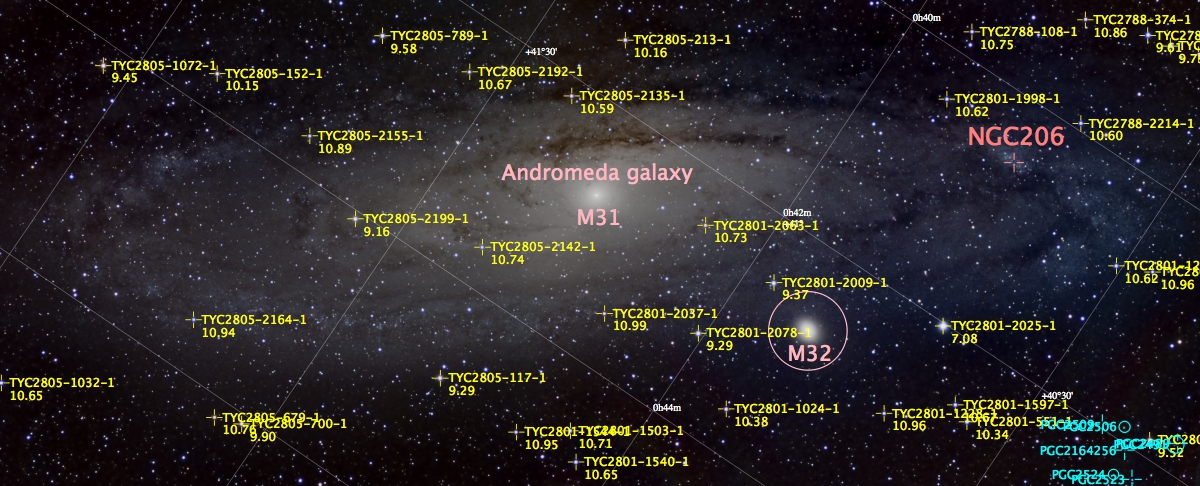Messier 31, known as the Andromeda Galaxy, is a spiral galaxy located roughly 2.5 million light years from Earth. It is named after the constellation in which it appears. It is our closest major neighboring galaxy and is also the largest galaxy in the Local Group, with approximately one trillion stars contained within the galaxy (compared to our own Milky Way galaxy which contains 300-400 million stars) by latest estimates.
Andromeda is possibly on a collision course with the Milky Way. The two galaxies are expected to eventually collide and form a single galaxy, roughly 4.5 billion years from now. It is one of the brightest Messier objects and is visible to the naked eye, even in areas with low to moderate light pollution. At over 3 degrees in apparent size, it is also huge in the night sky – around 6X the apparent size of the moon. While the core is extremely bright and visible with the naked eye and through visual observing equipment, the dimmer outer arms require long exposure photography to bring them into view.
This is the second attempt by the Claustonberry Observatory to photograph this famous object, and the first attempt using the ES127 refractor and monochrome SBIG camera. Due to the apparent size of the galaxy, the image above is our first attempt at a mosaic image – multiple targets were photographed to get the entire galaxy into frame, and then those targets were combined to form one large, mosaic image of M31. The resulting final image is composed of 224 individual frames (including calibration frames) from the camera.
Image & Equipment Details:
Date: 9/14/17
RGB Image, 249 Minutes total Integration
2 frame mosaic composition
Frame 1:
R: 14X180s Bin 2X2
G: 14X180s Bin 2X2
B: 14X180s Bin 2X2
Frame 2:
R: 14X180s Bin 2X2
G: 14X180s Bin 2X2
B: 13X180s Bin 2X2
Calibrated with bias, flat, and dark frames
Processed in PixInsight
Temp: -20C
Imaging Scope: Explore Scientific 127CF Apochromatic Triplet
Imaging Camera: SBIG STF-8300M
Annotated Image:



